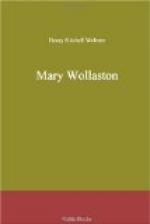There was a certain variety in the emotions of the rest of the audience, but they met on common ground in the feeling of not knowing where to look or what to say. Their individualities submerged in a great crowd, they might—most of them—have allowed themselves to be carried away, especially if they’d come in the expectation—founded on the experience of other audiences—that they would be carried away. But to sit like this, all very much aware of each other while a woman they knew, the wife of a man they had long known, proclaimed a naked passion like that, was simply painful. What they didn’t know you see—there was no program to tell them—was whether the thing was inspired or merely dreadful, and when it was over they sat in stony despair, waiting, like the children of Israel, for a sign.
It was LaChaise who broke the spell by crossing the room and unceremoniously displacing Novelli at the piano. He turned back to the beginning of the score and began reading it, at first silently, then humming unintelligible orchestral parts as he was able to infer them from the transcription; finally with noisy outbursts upon the piano, to which din Novelli contributed with one hand reached down over the conductor’s shoulder. Paula standing in the curve of the instrument, her elbows on the lid, followed them from her copy of the score. It got to the audience that an alert attitude of attention was no longer required of them. That in fact, so far as the three musicians were concerned, nothing was required of them, not even silence. As an audience they ceased to exist. They were dissolved once more into their social elements and began a little feverishly to talk.
The realization broke over Mary with the intensity of panic that some one of them might speak to her. She rose blindly and slipped out into the hall, but even there she did not feel safe. Some of them, any of them, might follow her. She wanted to hide. There was a small room adjoining the studio—it had been the nurse’s bedroom when the other had been the nursery—and its door now stood ajar. She slipped within and closed it very softly behind her.
Here in the grateful half-dark she was safe enough although the door into the studio was also part way open. There was nothing in here but lumber—an old settee, a bookcase full of discarded volumes from the library and an overflow of Paula’s music. No one would think of looking for her in here.
But as she turned her back upon the door that she had just closed, she saw that some one was here, a man in khaki sitting on the edge of that old settee, leaning forward a little, his hands clasped between his knees. She had come in so quietly he had not heard her.
It seemed to her afterward that she must have had two simultaneous and contradictory ideas as to who he was. She knew,—she must have known, instantly—that he was Anthony March, but his uniform suggested Rush and drew her over toward him just as though she had actually believed him to be her brother. And then as he became aware of her and glanced up, Paula in the other room began singing the last song over again, her great broad voice submerging the buzz of talk like the tide rushing in over a flat. Without a word Mary dropped down beside him on the settee.




